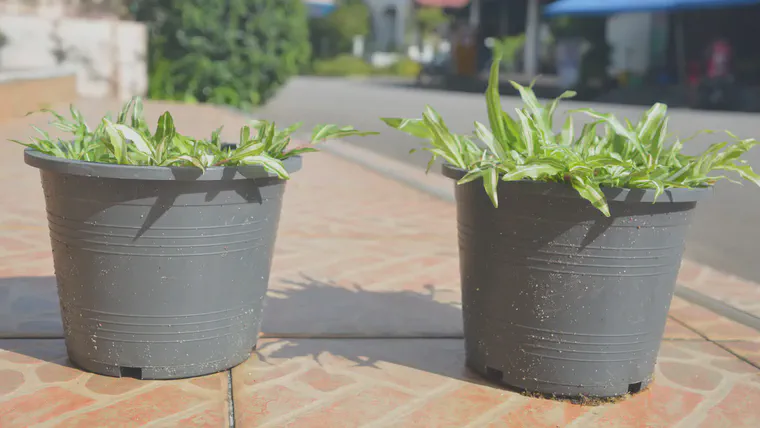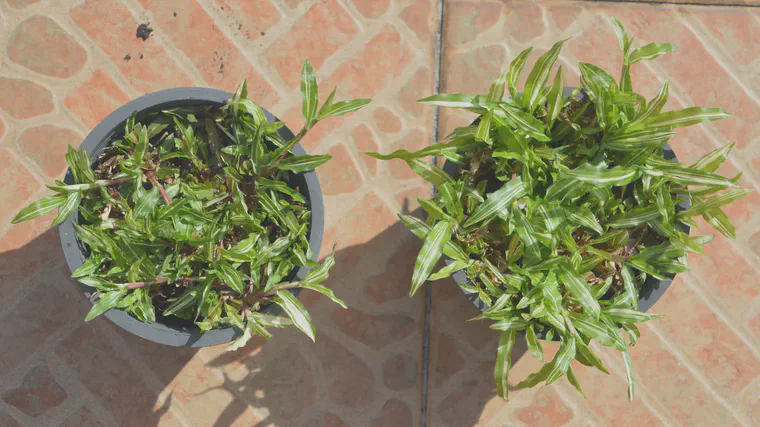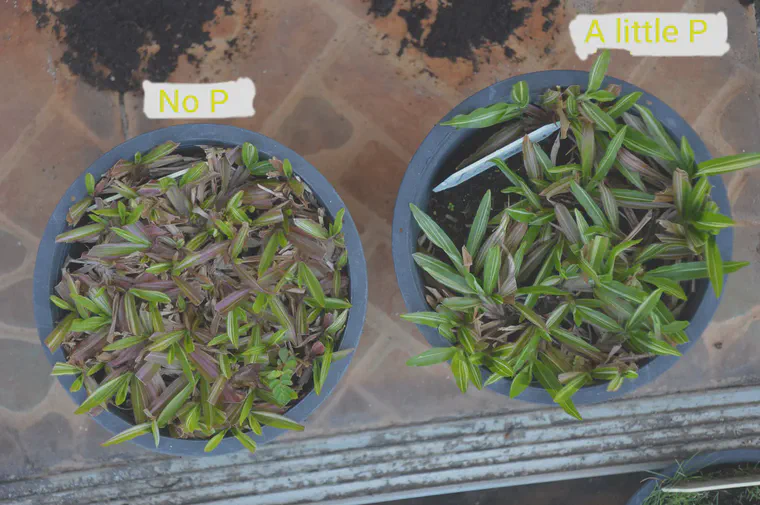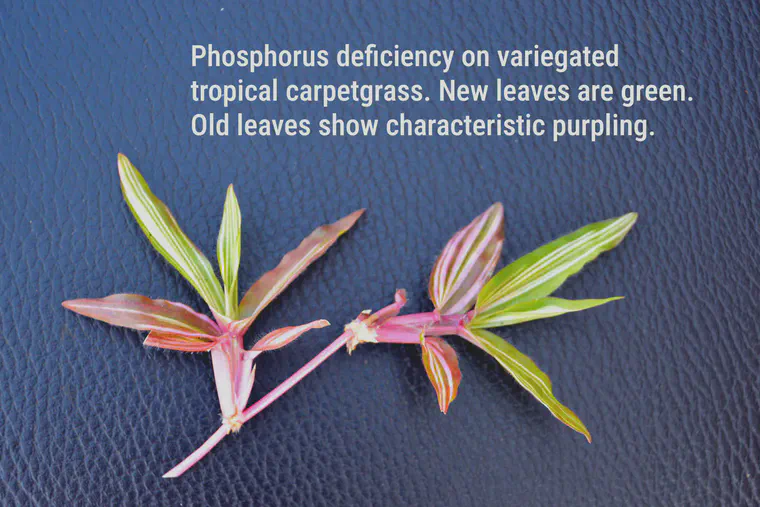Lack of response to a fertilizer application
These pots of variegated tropical carpetgrass (Axonopus compressus) received an application of granular 16-16-16 fertilizer twelve days before this photo was taken. The grass on the right responded with a lot more growth than did the grass at left.

The fertilizer was applied at the same rate to both pots. Here’s a top view.

What’s happening here is a phosphorus (P) deficiency. These two pots were maintained with different levels of P fertilizer. For the past year or so. I deliberately withheld P from one of these pots.

Tropical carpetgrass is the best grass I’ve seen for showing phosphorus (P) deficiency—especially in this organic soil. These pots are filled with coconut coir that tests for Mehlich-3 P less than 20 ppm and a Bray-2 P less than 5 ppm.

The same symptoms are seen in a nearby park with acid soil and no fertilizer: carpetgrass has this same response, with new leaves green and old leaves purple.
Having some fun with P deficiency, that’s what I am doing here. But for managed turfgrass, this is an avoidable disaster. I recommend using the MLSN method of soil test interpretation to ensure the grass is supplied with enough P. If you were to look only at the top two images, I think you might fail to recognize that this is a P deficiency. And in these pots the deficiency doesn’t matter, and I’ve caused it on purpose. But on professionally managed turf that gets traffic? There’s no reason to mess around.